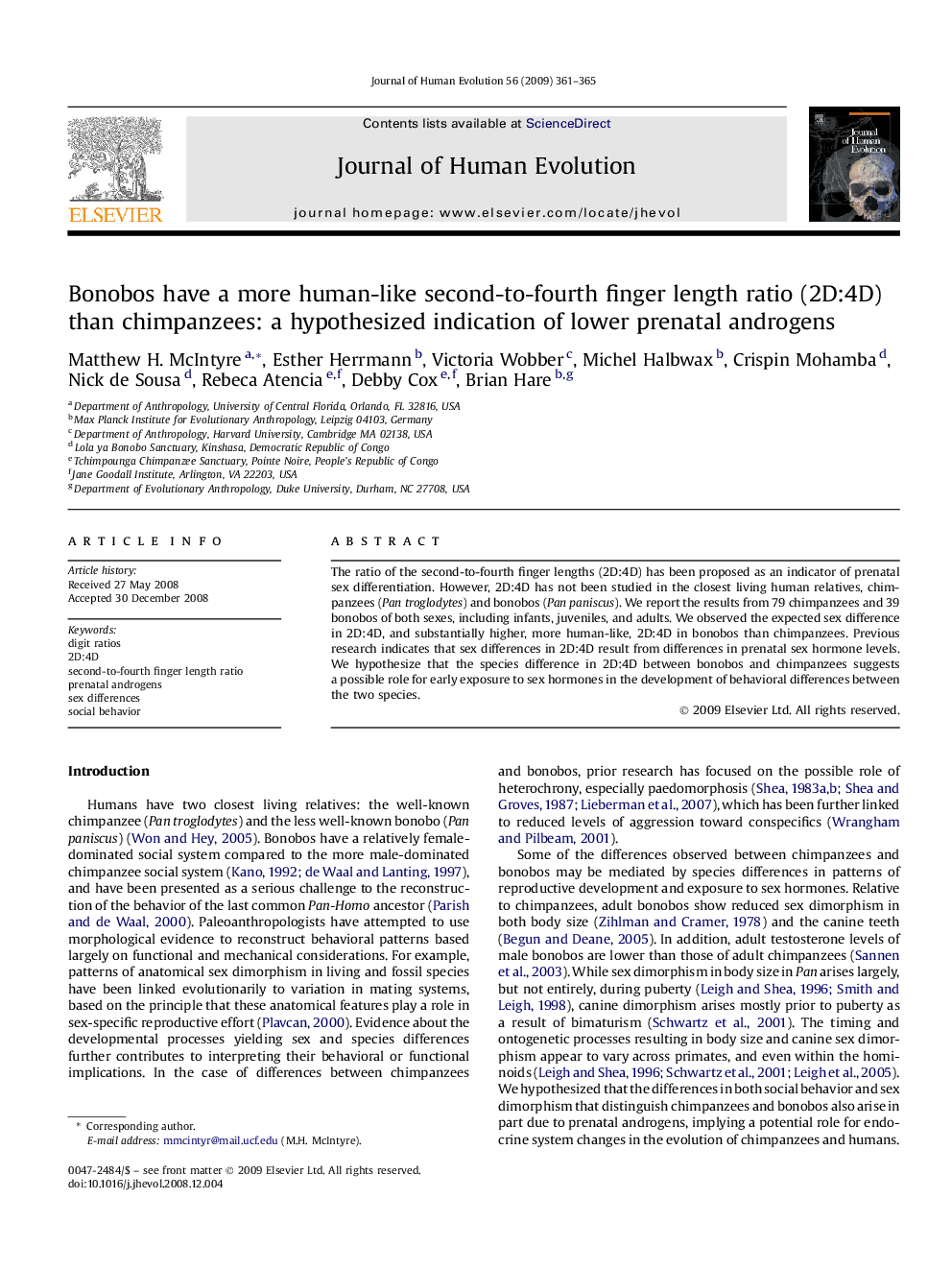| Article ID | Journal | Published Year | Pages | File Type |
|---|---|---|---|---|
| 4556747 | Journal of Human Evolution | 2009 | 5 Pages |
The ratio of the second-to-fourth finger lengths (2D:4D) has been proposed as an indicator of prenatal sex differentiation. However, 2D:4D has not been studied in the closest living human relatives, chimpanzees (Pan troglodytes) and bonobos (Pan paniscus). We report the results from 79 chimpanzees and 39 bonobos of both sexes, including infants, juveniles, and adults. We observed the expected sex difference in 2D:4D, and substantially higher, more human-like, 2D:4D in bonobos than chimpanzees. Previous research indicates that sex differences in 2D:4D result from differences in prenatal sex hormone levels. We hypothesize that the species difference in 2D:4D between bonobos and chimpanzees suggests a possible role for early exposure to sex hormones in the development of behavioral differences between the two species.
